
It’s not just a place for Americans to get their driver’s licence; DMV — depth, movement, visibility — is a mantra for steelhead-rigging success.
Not long ago, I was fishing a moderately deep run for steelhead after a rainfall. The water had cleared just enough that I could see the algae-covered rocks littering the bottom of the river. Drift after seemingly promising drift did nothing but deepen the mystery; this had been a very productive run the day before. Where had all the fish gone?
I was about to pack up my rod in resignation when I noticed something; the configuration of the rocks had changed! They weren’t stones at all; They were steelhead, hugging bottom and probably feeding. I’d been fishing this stretch for over an hour, so why hadn’t I hooked any?
If you guessed that I was fishing with the wrong bait, you’re only partially right. Switching from roe, to worms, to nymphs, to streamers made no difference. What brought me success that day was much simpler than that. I switched up my rig. When I lengthened my lead, added a few tiny split shot, and slowed my drift, suddenly the game was on. The next hour saw at least half a dozen bright, aggressive fish come to hand.
Three simple factors
Fishing with the right stuff is only part of the equation. Using the right rig is even more important. There are lots of complicated aspects to get right, but it all starts with a method that’s founded on three simple factors: depth, movement, and visibility (DMV). Paying close attention to these three things and making them work in unison will help guide all your choices, from bait, to float, to shot and shot pattern.
Depth
Depth may seem almost too obvious to mention, if it weren’t for the fact that steelhead are almost always hugging bottom. There are exceptions to this of course, but nine times out of 10 it’s true.
There are lots of reasons fish stick to the bottom. The deeper the water, the more depth acts as cover. The bottom of a river, often covered with rocks, boulders, logs, and other structural elements, is one big current break where fish can avoid the main force of the moving water and catch drifting food more easily. They are also better camouflaged on bottom and further away from airborne predators.
Movement
Movement is not only about the strength and speed of the current — both of which are important — it’s also about how the river is moving. For example, is there an eddy in the pool you’re fishing? Sometimes, current can gush upwards, dragging your bait with it, pulling it out of the strike zone. How the water moves determines how your float and bait will move, and keeping it as natural as possible is the goal.
Where the river is not moving much — in estuaries and long, slow pools around log jams or natural barriers — fish will often suspend. Fishing deep for fish who are only a few feet from the surface is a common mistake and is easily avoided in a slow-moving water column, sometimes even in the middle of the fastest stretch of river.
Visibility
Visibility also almost goes without saying. Many water conditions where they can see the fish, however that clarity also means that the fish will see them, get skittish, and become more difficult to entice. I don’t know about you, but if I was being chased by King Kong I don’t think that missing dessert would be one of my priorities!
The opposite situation is high, muddy water with very little, if any, visibility. It’s difficult to find fish in these conditions, as they are often pushed into areas where they would not normally be found, sometimes inches from shore. Rocks and boulders that are submerged after a big rain can act as current breaks for sheltering fish in these conditions.
However, in medium clarity, between 12 to 24 inches of visibility, fish are often calmer and exactly where you would expect them to be. The extra sedimentation in the water acts as cover, and, best of all, the turbidity stirs up delicious little food stuffs that make them more apt to feed actively. Imagine that — happy, feeding fish!
Putting it together
Putting the DMV factors together will always dictate the length of your rig, the size of your float and shot, the baits or lures you will most likely want to use, and how much trot or physically slow down your rig. Here are some examples.
Deep, slow, clear
To many anglers, this is the most tantalizing of situations. Who hasn’t tried, sometimes fruitlessly, to entice steelhead that are hovering just within sight? Depending on the time of year, dozens of them can be lazily holding in a pool, completely disinterested in feeding.
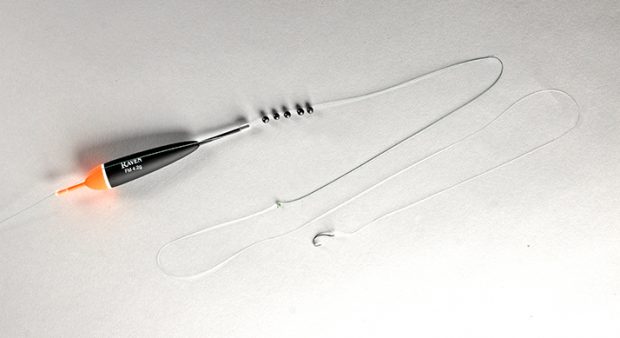
Steelhead are sensitive fish and they become pressured easily. Small floats with light line, tiny shot, and even tinier offerings — as small as you can reasonably get away with — are the best way to achieve success. Any unusual movement in the float or bait can trigger panic, so dead drifting with little or no trotting (holding back on the float) is recommended.
Keep split shot far away from your hook. You can jam your shot just under your float, enough to keep it cocked, or wrap a few inches of lead line around the bottom of the stem in lieu of split shot.
If I know I’m going to spend most of the day float fishing “frog water,” where snags are unlikely, I will rig with just one length of 8- to 10-lb. fluorocarbon. It’s a minimalistic way of avoiding extra knots or swivels below the float, making for the most unobtrusive and maintenance-free presentation possible.
Shallow, riffled, clear
When there are lots of anglers around, deep pools tend to get too much attention. Fish that have been pressured will often seek refuge in fast water, behind large stones or boulders, where they can continue to feed in relative peace. The riffled surface also acts as cover, distorting your view of the bottom and filtering out sunlight. It’s good water to look for, even when you have the river all to yourself.
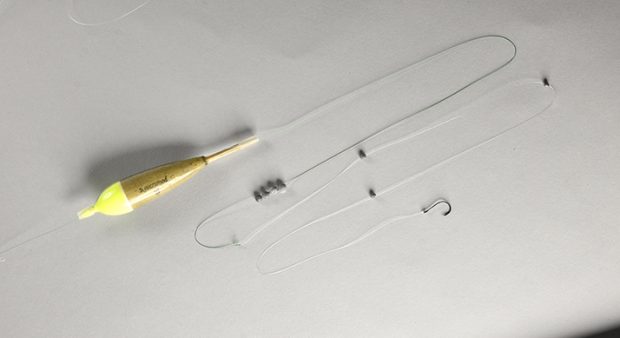
The key to presenting in fast water is to locate seams on the surface, which allow you to slow things down. A good seam, in fact, can be surprisingly slow. Still, trotting your float is almost always necessary in these conditions, which requires a longer lead. Larger floats and heavier shot are also often called for. A bigger float is easier to manoeuvre, and more shot helps you get down deeper, faster.
Frequently, some split shot will have to be placed near the hook in order to keep the bait down. Depending on the force of the current you’re tackling, you’ll have to choose between a fairly even shot or a bulk-shot pattern. An even pattern will provide a more predictable drift, but bulking your shot will help your rig cut down where the water is fastest.
Trial and error is a necessary part of finding bottom in this type of water. You need to constantly adjust your lead and trot to where the float consistently registers the tap-tap-tap of rocks and other obstructions on the bottom.
Deep, fast, clear
In these conditions, you rarely get to see the fish. They’re down too deep. In a way, you’re caught between two worlds; you need a big float and heavy shot to find bottom and get your bait down, but you also have to take care not to spook your quarry. The trick is to start at the top and work your way down.
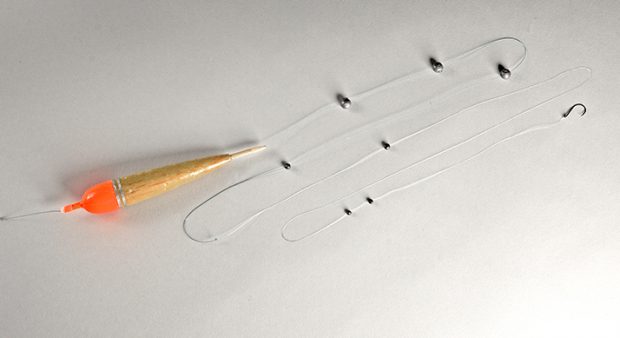
Begin with a large float, either a fixed or slip float. Then, based on your choice, pick your weight. For a fixed float, pattern your shot from heavier to lighter down to roughly three feet from your hook. For a slip-float, you can bulk your shot or use a single 3⁄8 to 1⁄4 oz. egg sinker, stopped again, about three feet from your hook. I often place a small bead and a small split shot directly beneath the egg sinker. The bead absorbs the impacts of the sinker as it slides up and down your line and the split shot allows you to adjust its position relative to your bait.
Add split shot
As a finishing touch, I add three to four “dust shot” (tiny split shot in 3BB size) evenly distributed from about six inches above the hook to about eight to 10 inches. This adds just enough extra weight to keep your offering from fluttering up out of the strike zone, and yet it’s small enough not to attract undue attention.
With regards to tippet size and strength, I prefer to go as light as possible since I feel that thinner, limper line imparts a more natural motion overall. However, in deep, fast conditions I will go as heavy as I can. Generally, 8- to 10-lb. fluorocarbon works just fine. If there’s colour to the water, Maxima Ultra Green or Berkley Trilene XT also work great. I like a size 8- or 6-specialist hook when using bait since these larger hooks hold fish better without being oversized.
Medium depth, speed, and moderate visibility
If you think back to your best day on the water, it’s likely that it happened in this scenario. Shortly after a precipitation event and as the water clears, steelhead can congregate in water just a few feet deep and where the current is neither too fast nor too slow, since it serves as a transitioning space where they can rest and feed on their way up or down the river.
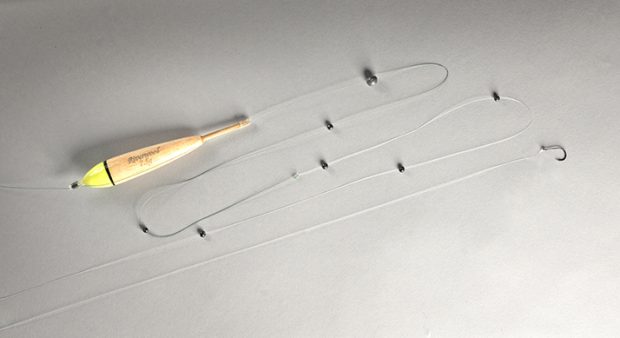
As usual, rigging is vitally important. While fish are more apt to feed in these conditions, making a bite more likely, they are also usually seeing lots of items on the menu that are literally drifting right into their mouths. This means that they don’t have to move far to grab a tasty morsel, so they won’t. You have to approach them at the right depth and speed to make the magic happen.
Spacing your shot evenly, or at slightly longer intervals, will give your rig the best mix of quickness to depth, strike sensitivity and accuracy. A slight trot will also be helpful, to impart a natural velocity to your offering, so always add 6 to 18 inches more than your best guess at the actual depth you’re fishing.
Finishing touches
As with any craft, it’s always the finishing touches that reveal the skill of the practitioner. Little things mean a lot. Here are a few extras to keep in mind.
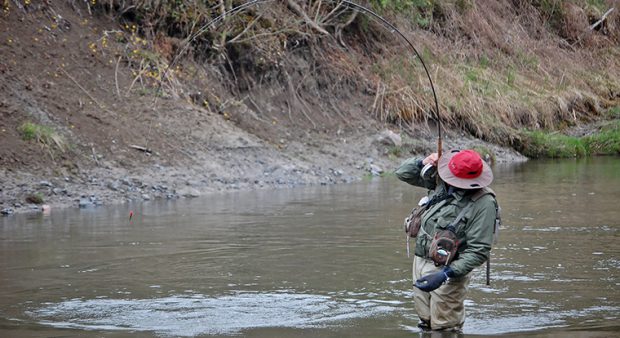
Slip floats
There are lots of situations where slip floats apply. Most obviously, when a long lead (10 ft. or more) is required, and longer casts are necessary. Pairing one with an egg sinker will allow you to reach water that may be inaccessible to other shore anglers. Smaller slip floats are also effective accomplices for jigs and live bait, in slow, clear water. They allow you to gently jig your offering with minimal interference on your drift.
Non-toxic
Lead alternatives. Lead, as a toxic substance, has been scrutinized and will continue to be so. It’s a good idea to get a leg up on alternatives. Tungsten is a well-known substitute that’s heavier than lead, but is difficult to find in shot. There’s a putty on the market, often used in “chuck and duck” presentations by fly fishermen that can serve for float fishing as well. As the name implies, you simply mould and squeeze a gob (or gobs) of it on your line. Tin is lighter, so the shot has to be bigger, but coloured tin split shot is also available, which remedies the need for extra visibility.
Dust shot
Dust shotting, or the placing of tiny shot in pairs or triples close to your hook, is not only a great way to secure your bait against rising currents, it’s an effective pairing with snag-resistant rigging. Bulk heavier shot beneath your float, and add a slightly larger split shot BB, 2 or 3) just above the dust shot. This causes the intervening line to balloon forward while still keeping the business end down. It provides extra sensitivity and the ability to distinguish between strikes and snags, so you have a chance to pull out if necessary. Try it next time you fish a deep, woody river with moderate current.
Originally published in the Fall 2017 edition of Ontario OUT of DOORS magazine.
For more salmon fishing stories, click here.


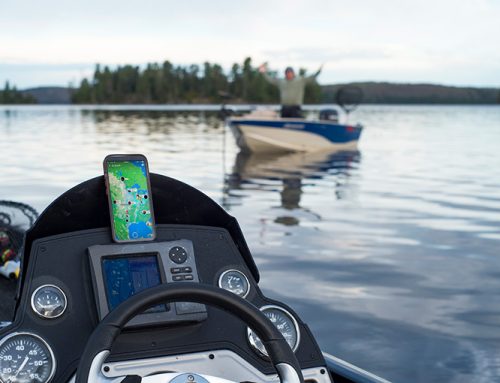
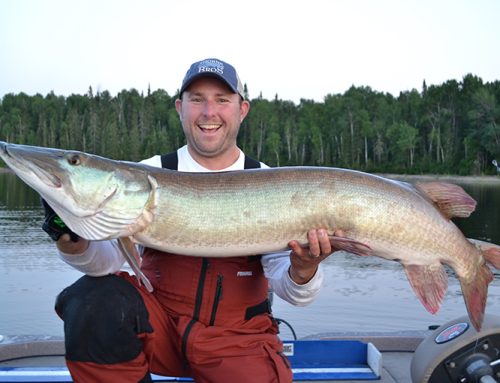
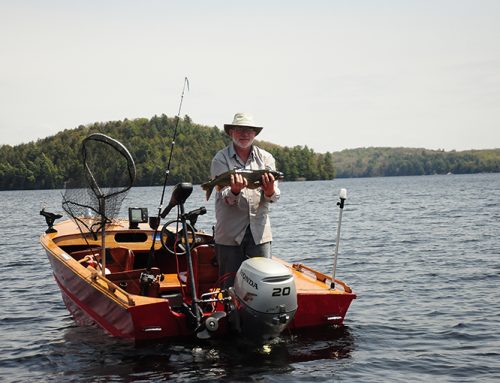
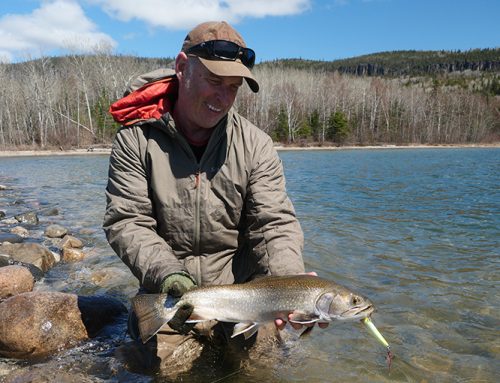
Leave A Comment